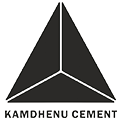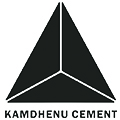The contemporary world is built on a concrete basis, from skyscrapers to enormous bridges, pavements to strong dwellings. But have you ever wondered where this omnipresent building material comes from and how it gets to your local construction site? This blog explores the intriguing world of RMC Ready Mix Concrete factories, the unsung heroes behind the scenes. We’ll look at how cement production businesses and RMC plant facilities like Kamdhenu Cement (A leading cement manufacturing company) collaborate to provide a consistent supply of this important construction ingredient.
The Birth of Concrete: Revealing RMC plant Manufacturing Process
The story of concrete begins with the main component, cement. Cement manufacturers run large-scale operations where limestone, clay, and other raw materials are carefully blended and processed. Here’s a look at the important stages of RMC plant manufacturing process:
1. Raw Material Extraction
Calcium carbonate is extracted from limestone quarries and used as the foundation for cement. Clay and other minerals are obtained from specific mines or sources.
2. Grinding and Proportioning
The raw ingredients are finely ground and accurately weighed to guarantee that the chemical composition is appropriate for cement manufacturing.
3. Heating and Chemical Transformation
The powdered mixture is fed into a big rotating kiln, a massive heated furnace that reaches extremely high temperatures. This process initiates a series of chemical reactions that convert the raw ingredients into clinker, which are tiny, marble-sized nodules that serve as the building blocks of cement.
4. Grinding and Finishing
After cooling, the clinker is finely ground with various additives, like gypsum, to adjust the setting time. This end product is the Portland RMC plant, a necessary component of ready-mix concrete.
The Transformation: From Cement to Ready-Mix Concrete
While cement is the foundation, it requires other ingredients to form the flexible and workable mixture known as ready-mix concrete. Here is where the RMC plant comes into play. Here is where the magic occurs:
The bulk of the concrete mix is made up of aggregates, which include gravel, crushed rock, and sand. RMC factories obtain these aggregates from quarries or mines and carefully sift them according to size and content.
- Water and Admixtures: Precisely calibrated water is added to the cement and aggregates to start the hydration process, which involves the cement reacting with water to generate a strong, binding paste. Specialized admixtures can also be used to improve certain concrete attributes like workability, setting time, and strength.
- Mixing and Delivery: The calculated volumes of cement, aggregates, water, and any admixtures are blended together in enormous, rotating drums, which are the core of an RMC plant facility. These mixers provide a homogenous and consistent concrete mixture.
- Delivery Trucks: The newly mixed concrete is put onto specially designed concrete mixer trucks. These trucks contain a revolving drum that agitates the concrete during transportation, preventing it from hardening prematurely. This enables timely delivery to building locations.
The Synergy: Collaboration of Cement companies and RMC plant
Cement manufacturers and RMC plants share a symbiotic connection. Here’s why this partnership is important:
1. Efficiency and Expertise
Cement manufacturers concentrate on their core competencies. Creating high-quality cement. RMC facilities specialise in accurately mixing cement with other ingredients to produce concrete appropriate for a variety of building applications.
2. Quality Control and Assurance:
Both cement businesses and RMC facilities use severe quality control techniques at all stages of manufacturing. This assures constant quality in both the cement and the finished ready-mixed concrete product.
3. Meeting Demand:
By working together, cement firms and RMC plant facilities can assure a consistent supply of ready-mix concrete to fulfil the construction industry’s ever-increasing demands.
Benefits of Using Ready Mix Concrete – RMC plant
1. Convenience and Consistency:
RMC plant removes the requirement for on-site batching, saving time, labour, and space on building sites. It also ensures consistency in quality and mix design.
2. Reduced Waste:
RMC factories use advanced monitoring techniques to reduce material waste when compared to on-site batching.
3. Environmentally friendly:
Modern RMC facilities prioritise sustainable techniques like as recyclable materials and energy efficiency throughout manufacture.
4. Safety:
RMC production facilities follow rigorous safety guidelines, reducing the dangers connected with on-site concrete mixing.
Future of RMC Plant: Innovation and Sustainability
The RMC sector is continually changing, with an emphasis on innovation and sustainability. Here are several trends to follow:
- Automation and Technology: Increased automation in RMC facilities can improve efficiency, precision, and uniformity in concrete manufacturing.
- Sustainable Practices: Developing environmentally friendly concrete mixes and using renewable energy sources are top concerns for RMC facilities.
- 3D Printing Technology: The incorporation of 3D printing technology has the potential to transform the construction sector, and RMC plant companies are investigating how they may play a role in providing customised concrete mixes for this novel use.
Conclusion: Building a Brighter Future with Ready Mix Concrete
RMC plants play a vital role in shaping our built environment. From the meticulous production of cement to the precise mixing of ready-mix concrete, the journey from quarry to skyscraper involves a fascinating symphony of processes. Understanding the collaboration between cement manufacturing companies and RMC plant offers a glimpse into the complex world of construction materials. As the industry embraces innovation and sustainability, RMC plants will continue to be at the forefront, ensuring a steady supply of this crucial building block for generations to come. So, the next time you marvel at a towering structure or admire a well-paved road, remember the silent heroes – the RMC plants – that made it possible with their dedication to quality, efficiency, and progress.


